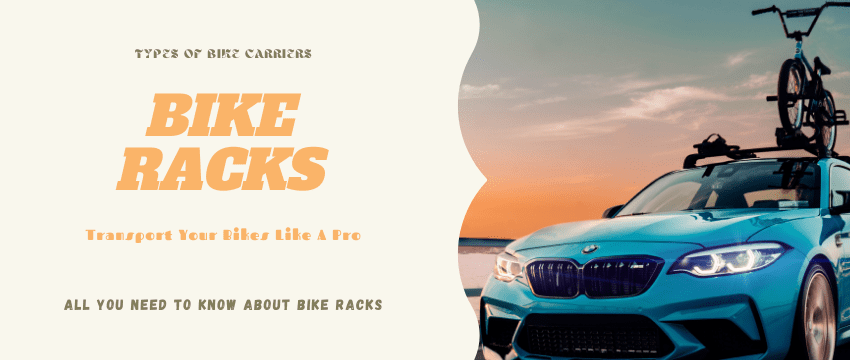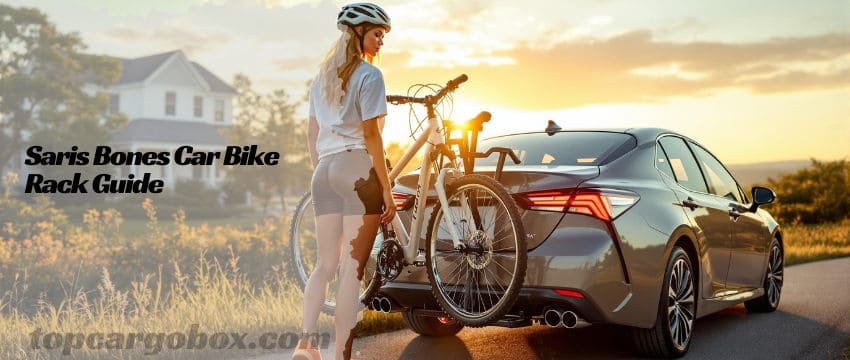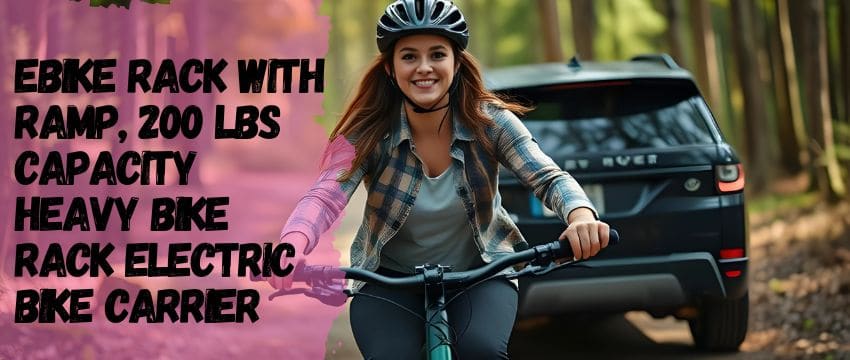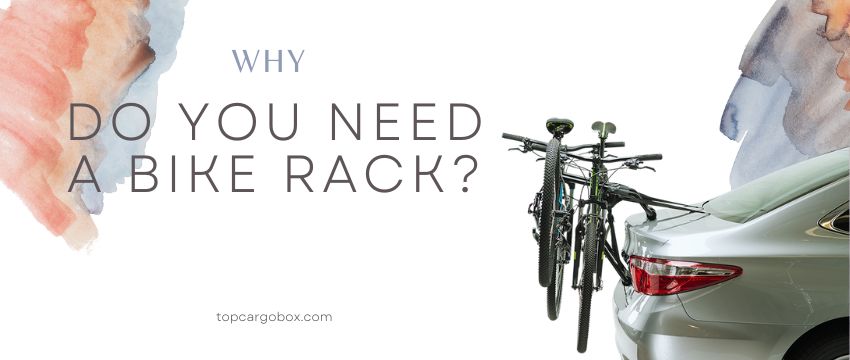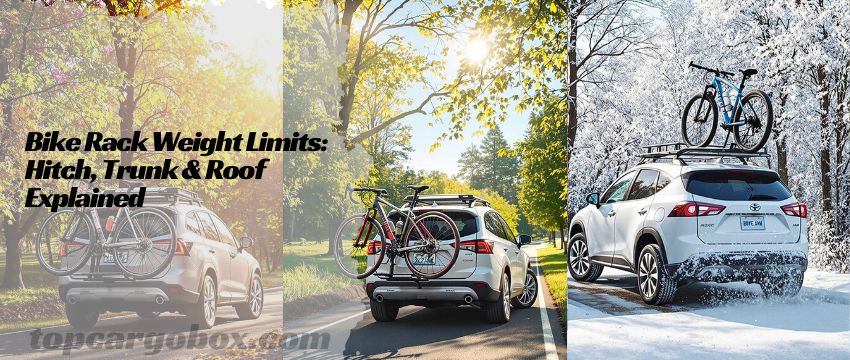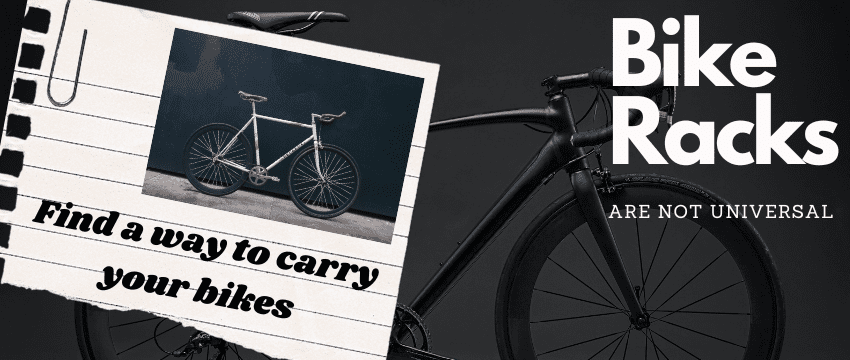If you decide to create a system to transport your bikes in your car between different locations, you can use this guide to know how many types of bike racks we have on the market. You can use bike carriers to carry bikes without occupying the interior space and free up the cabin room for more passengers.
You can find 4 kinds of bike carriers: trunk-mounted racks, roof-mounted racks, hitch-mounted racks, and spare tire bike racks. These bike racks have different features and mounting hardware, and you can choose one based on your specific vehicle and outdoor needs.
When choosing bike carriers for your car, you may require to contact the local auto dealer for a compatibility check.
We introduce 4 types of bike racks to you for comparison and consideration.
Hitch-Mounted Bike Racks
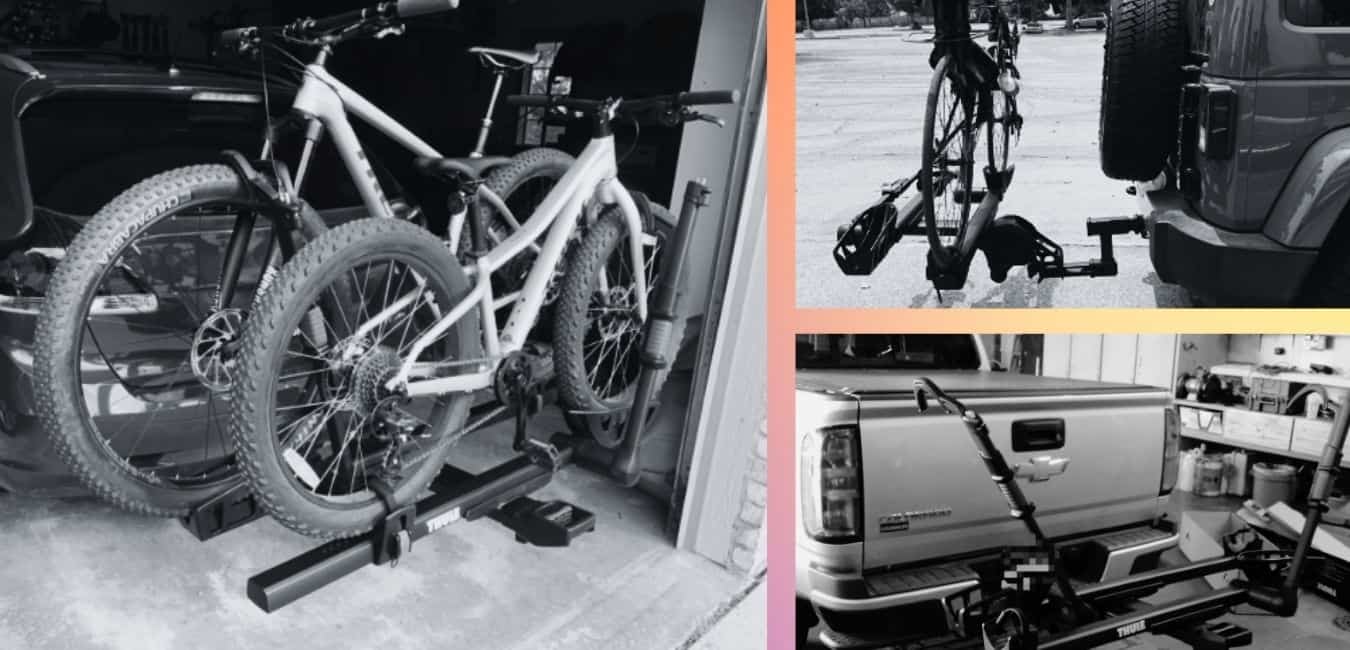
Hitch-mounted bike racks are expensive, but they can hold more bikes than other types of bike carriers. Most hitch-mounted bike racks can carry up to 4 bikes, even up to 5, and they are a perfect option for a family have many cyclists. These racks may block the hatchback, but most of them have a swing-away feature that allows users to swing it backward to give space for opening the hatchback gate.
Hitch-mounted bike carriers have two styles: arm style and platform style.
Hanging bikes on arms: these bike carriers come with a pair of holders that can carry and lock bikes when the car is in motion. These bike racks are lightweight and often provide more space behind the hatchback.
Additionally, these bike carriers don’t have a perfect security feature to prevent contact between bikes; thus, the bicycles may sway and damage each other’s body printing on the roads, especially on unpaved terrains.
Locking bikes on a platform: These bike carriers have a platform that you can put bicycles on and lock the wheels to prevent swinging and damage. These bike racks are heavy, and they are hard to store when the bike carriers are not in use. You have to contact the manufacturer to ensure that you can connect the chosen bike carriers to the hitch receiver. It is necessary to confirm that the hitch receiver you have is compatible with the wanted bike carriers. You can contact the auto dealer or the bike rack manufacturer for a compatibility check.
If you want to know more about which type of hitch receiver your car can use, you can read the manual for more detail. You also need to confirm that you choose a bike rack that can hold enough bikes for your family’s bike hiking.
What we like about hitch-mounted bike racks (pros): these bicycle racks are simple to use and install, and they are made of sturdy materials. If you want to use bike carriers at a high frequency, these hitch-mounted bike racks are perfect options because of their durability. Furthermore, these bike carriers come with locks that offer extra security to your bikes.
What we don’t like about hitch-mounted bike carriers (cons): these racks are expensive, and they are hard to store when they are not in use. If you don’t use bike carriers very often, you can consider using those cheaper racks which are light and easy to store. When picking hitch-mounted bike racks for your outdoor life, you have to choose one with a swing-away feature that gives more ground space when you want to open the hatchback for loading or unloading luggage.
related topics: how to choose a car rack
Spare Tire Bike Racks:

Can you see a spare tire outside the hatchback gate at the back of your car? If you find one, you can use the spare-tire bike carriers; otherwise, you cannot use one. These bike carriers usually stand on the tire mount and hold bicycles behind the spare tire. They are built for sports vehicles like Jeep and people who like off-road activities.
What we like about Spare Tire Bike carriers (pros): they are easy to install without a tool, and you can store them in the trunk when they are not on duty. They are cheaper than hitch-mounted bike racks.
What we don’t like about Spare Tire Bike Racks (cons): They have a small loading capacity, usually up to two bikes. It is impossible to mount spare tire bike carriers to the tire mount when a tire cover is in use.
Related Topics: how to clean and maintain bike racks
Trunk Mounted Bike Carriers:
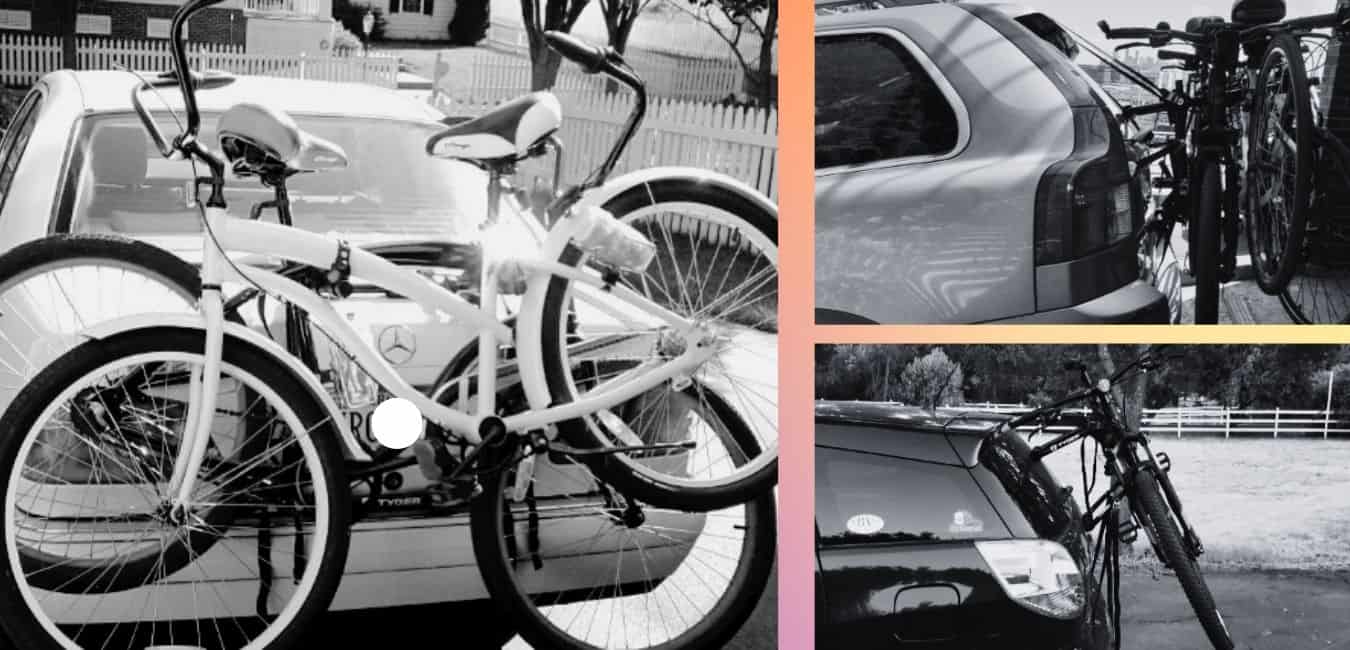
Trunk-mounted bike carriers are affordable. These racks mount on a car trunk with straps and hooks, and they come with two holders (arms) to carry up to 3 bikes in position with locks. These racks are light and foldable, so they are easy to store.
What we like about trunk-mounted bike racks (pros): they are simple to use and maintain, and they are affordable. They can work on most SUVs and sedans.
What we don’t like about the trunk-mounted bike carriers (cons): these racks cannot prevent swinging when driving on unpaved terrains. They are not for off-road events. However, if you choose those high-quality ones, they may have features that prevent swinging or wagging.
Roof-mounted Bike Racks:
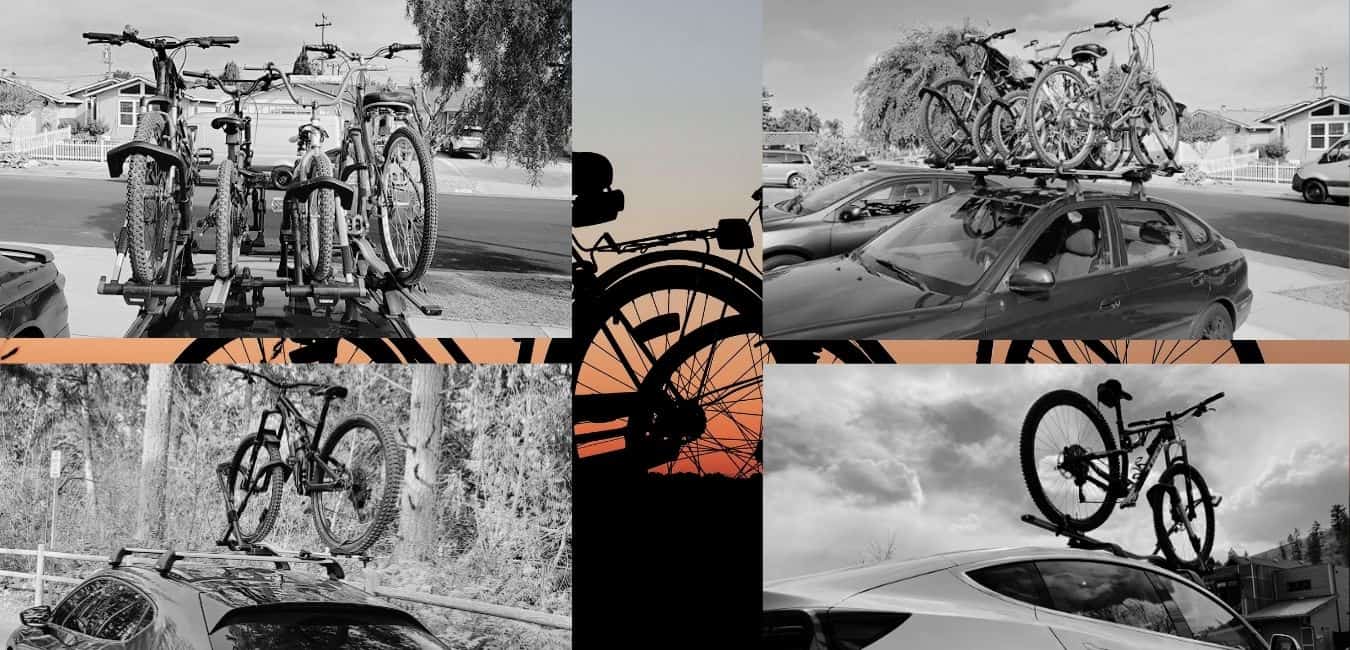
These bike racks stand on top of your vehicles, and you need to have roof racks (crossbars) to set up these bike carriers in position. You can contact the local auto dealer to get a pair of crossbars before using roof-mounted bike carriers for your bike hiking. These roof-mounted bike carriers are cheaper than hitch-mounted racks.
You have to lift bicycles above the car roof and mount them on the bike carriers; thus, you will drive with extra height on the roads. You cannot go to places like underground parking with loaded rooftop bike racks. These bike racks are for permanent use because they are long-lasting with sturdy materials.
Roof racks are not only for these rooftop bike carriers but also for many other rooftop-mounted cargo carriers like cargo baskets, bags, and boxes. You can create a cargo management system with these accessories if you do outing a lot.
related topics: roof racks on a bare roof
What we like about these rooftop-mounted bike racks (pros): these bike carriers are the most secure options for cyclists. They are easy to store in the garage when you don’t use them. You can mount other rooftop cargo carriers on the car roof with these bike carriers; consequently, they are the most versatile bike carriers on the market.
What we don’t like about these rooftop-mounted bike racks (cons): it is not an easy job to lift a bike to the height and then lock it on the bike racks. These roof-mounted bike racks can produce wind noise and affect the gas mileage, and you can refer to a guide to learn why roof-mounted cargo carriers can do such things on the roads.
Conclusion
We introduced three types of car bike racks in this article, and you can find their differences. If you have more questions about bike carriers, you can visit the FAQ page to check some frequently asked questions by most cyclists.
Our team is creating outdoor-gear relevant articles with passion. If our articles can help you to find the correct solutions for your questions, we will be happy about that. In the content creation process, we usually collect accurate and useful information online or offline to compile our content in an organized way. Consequently, we can guarantee that you can discover some expected answers to your questions. We appreciate your time on our site.

